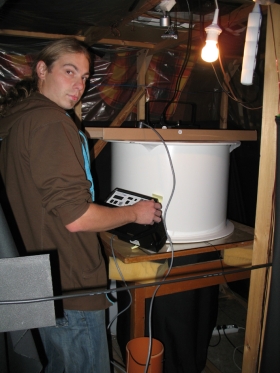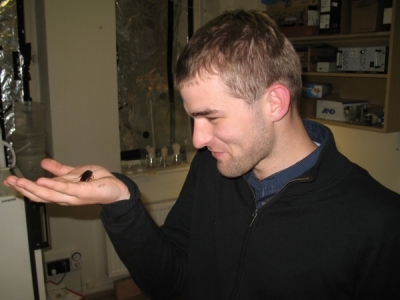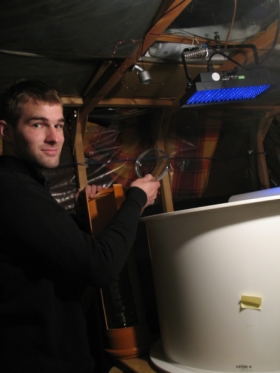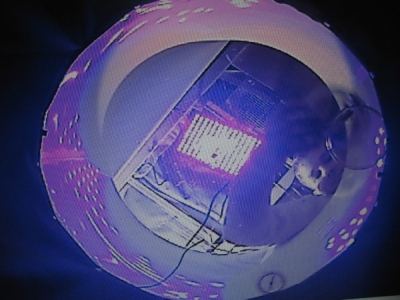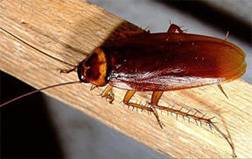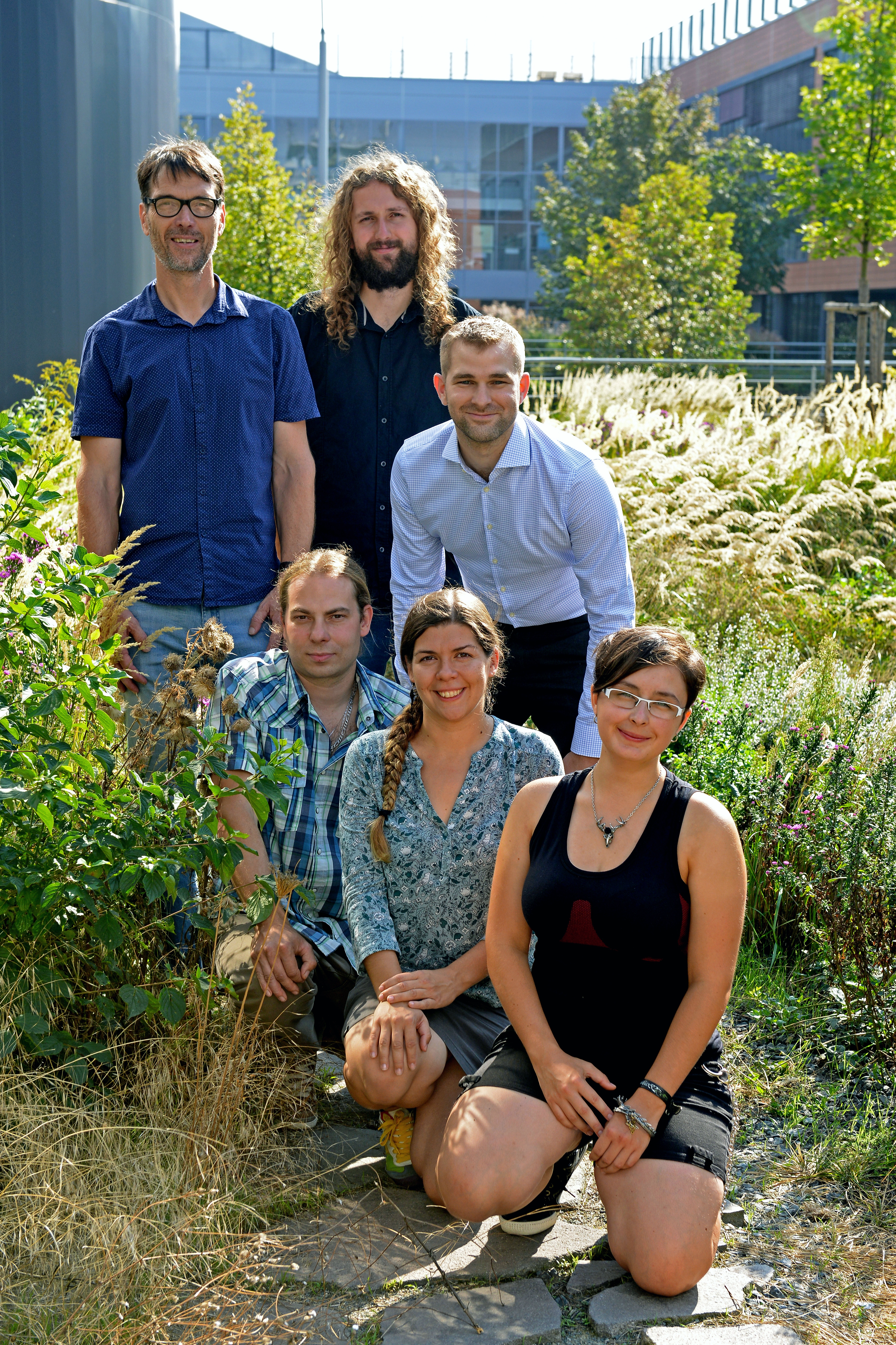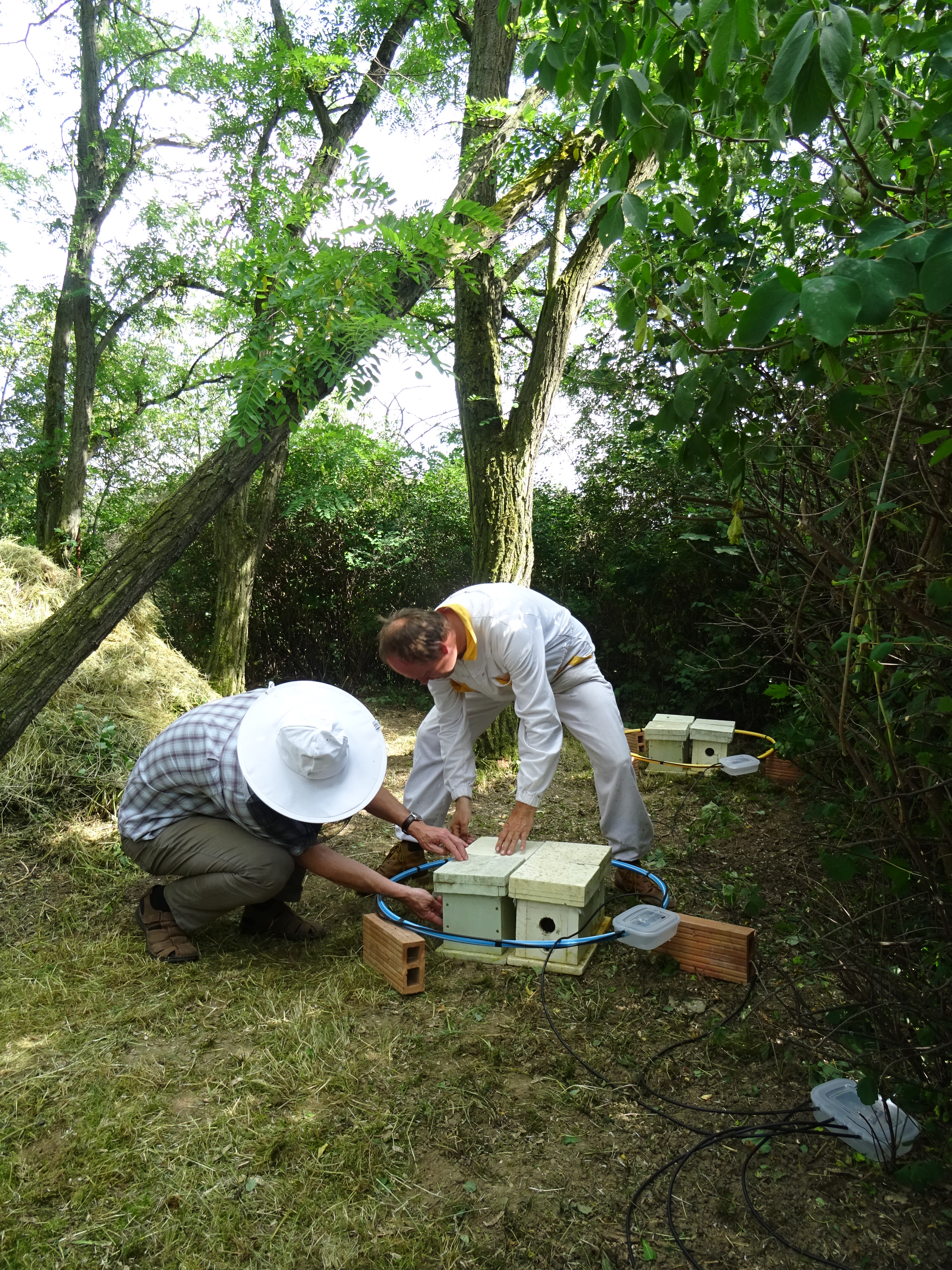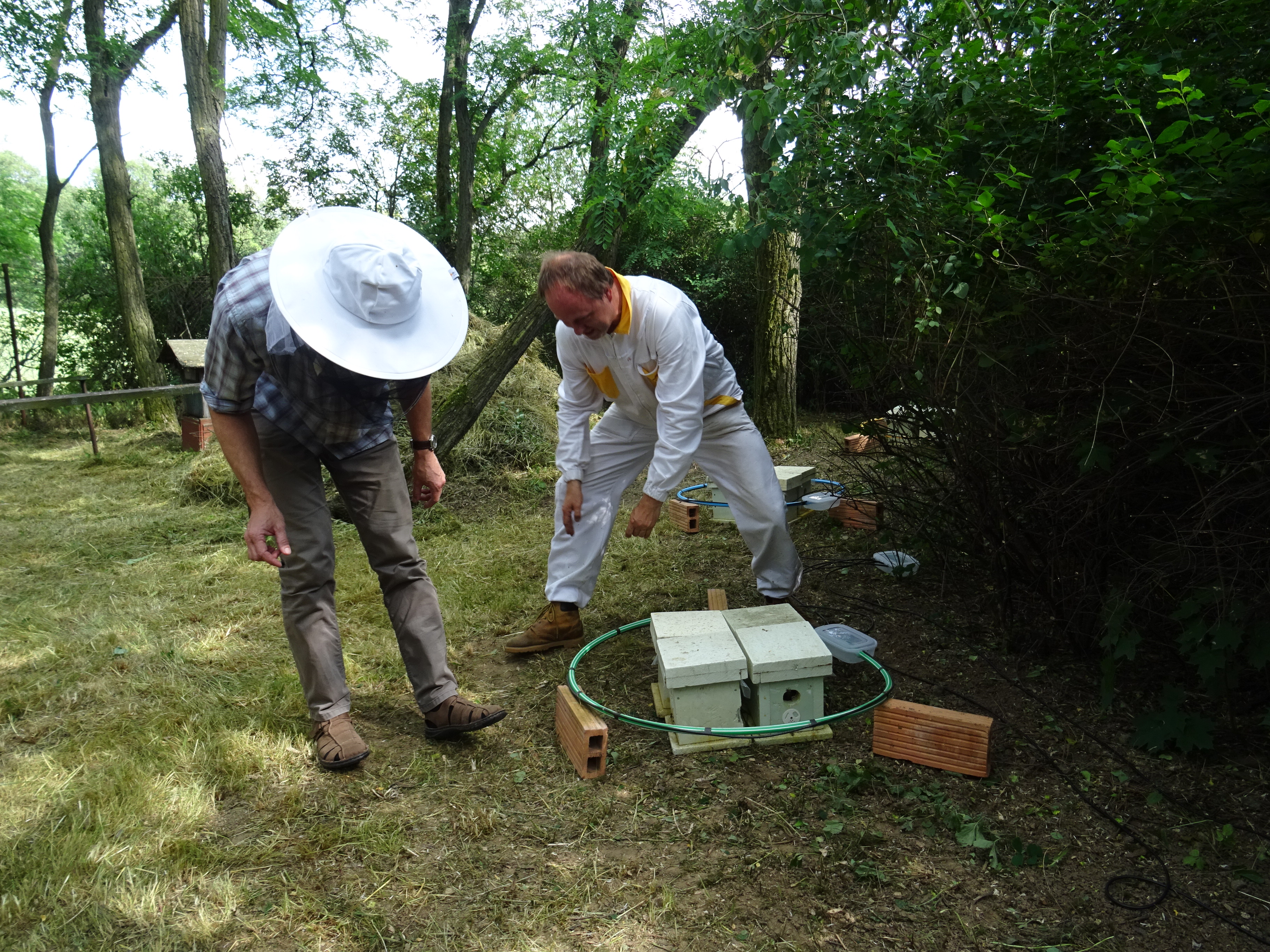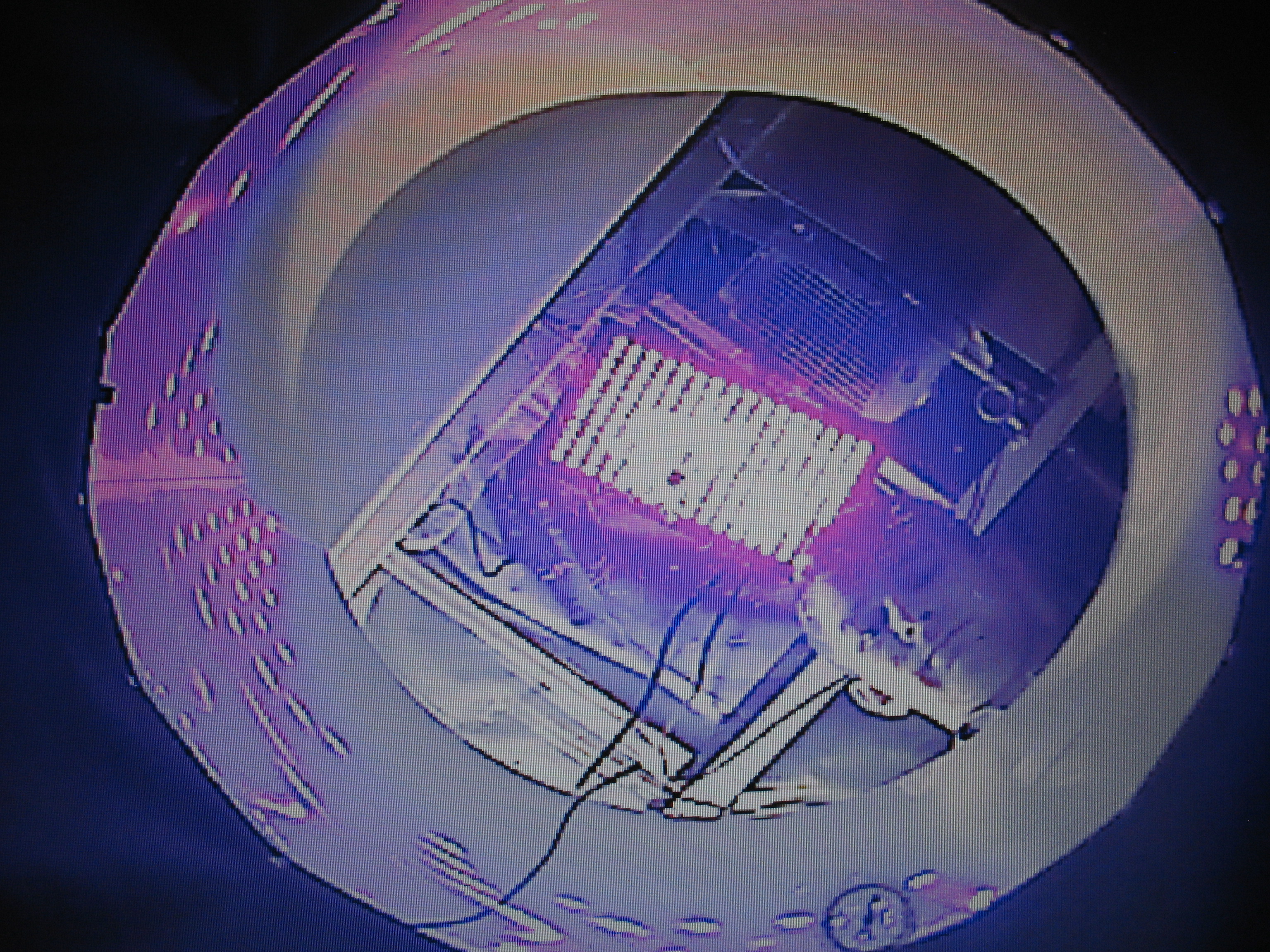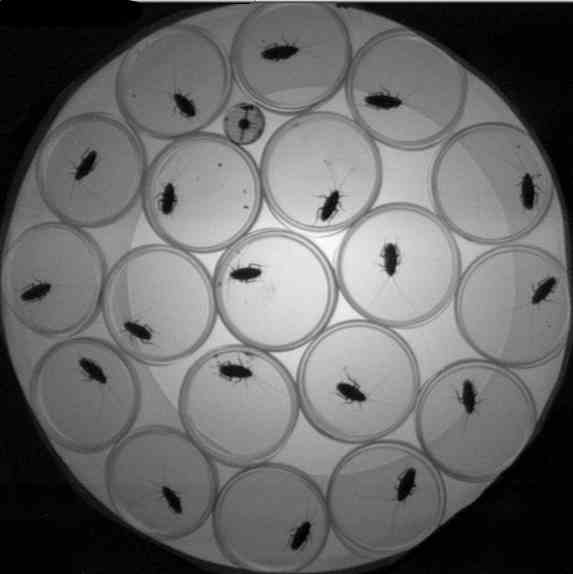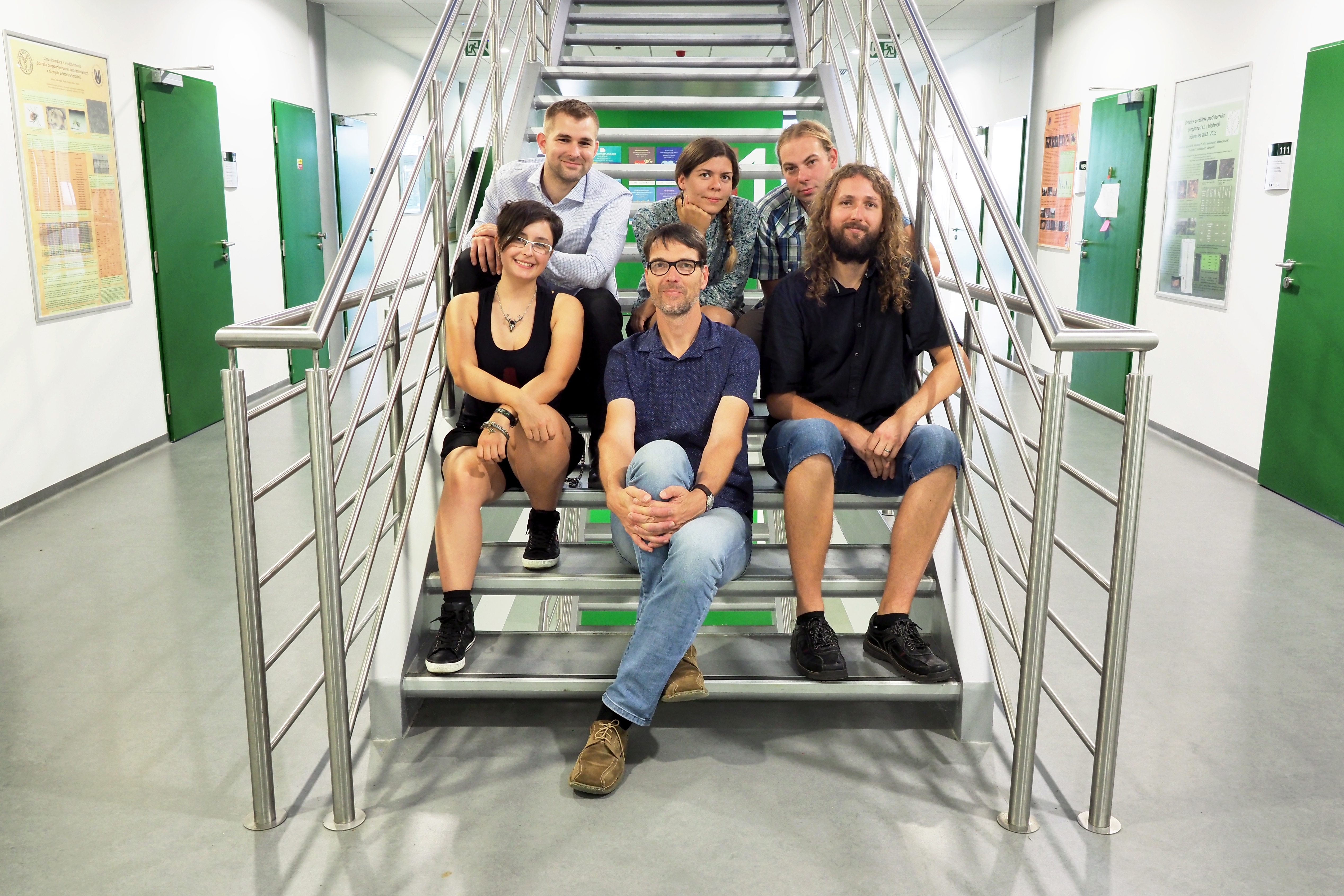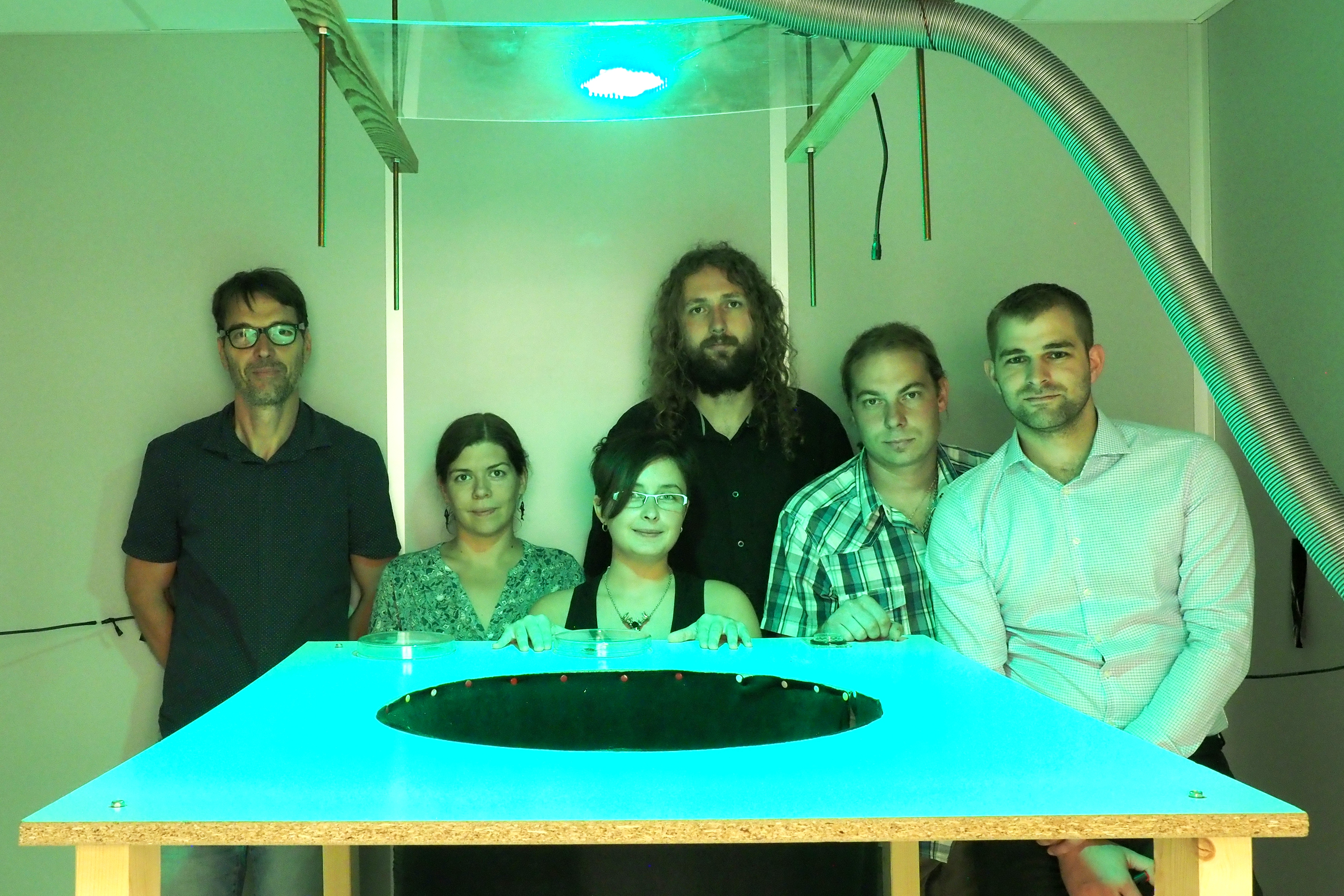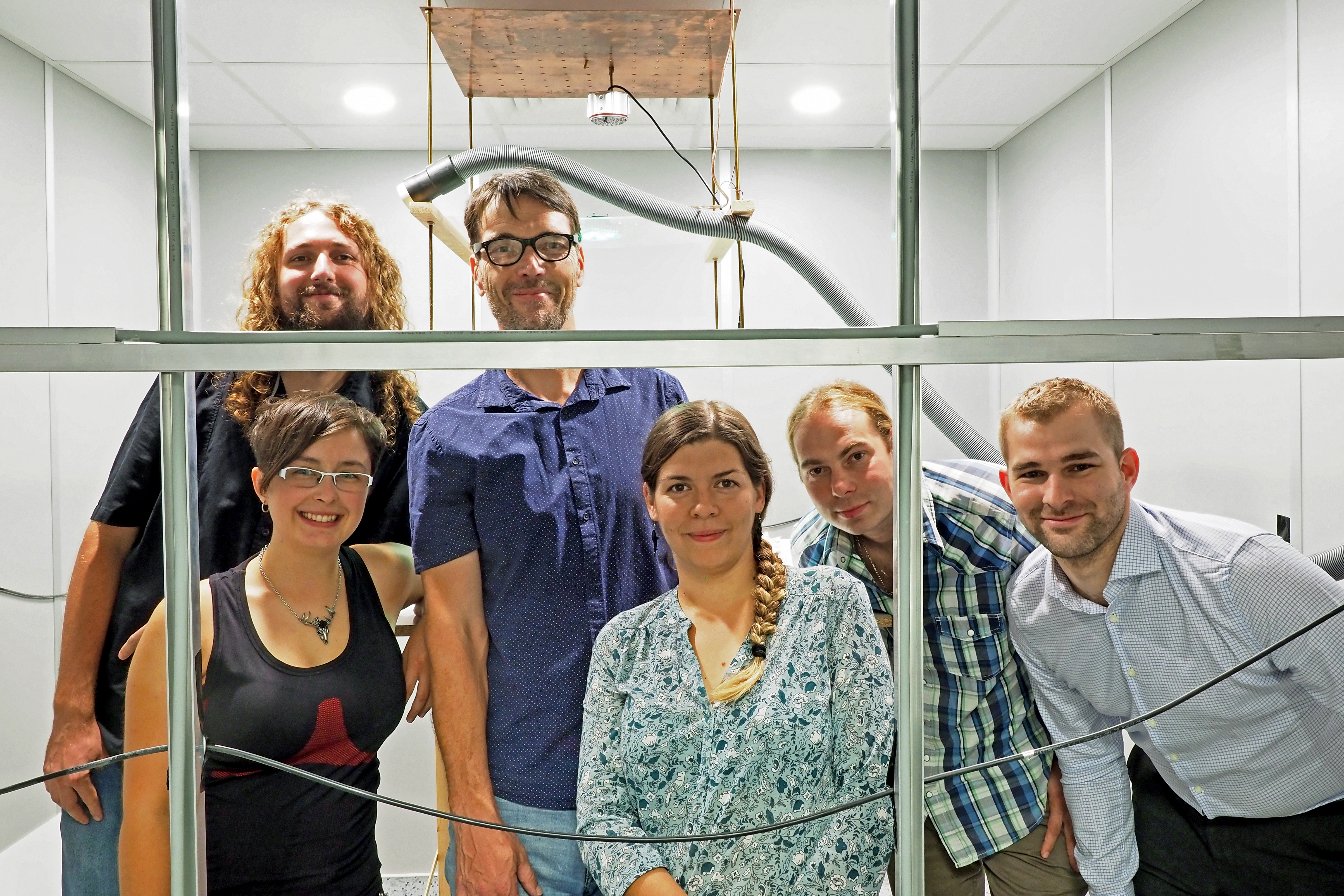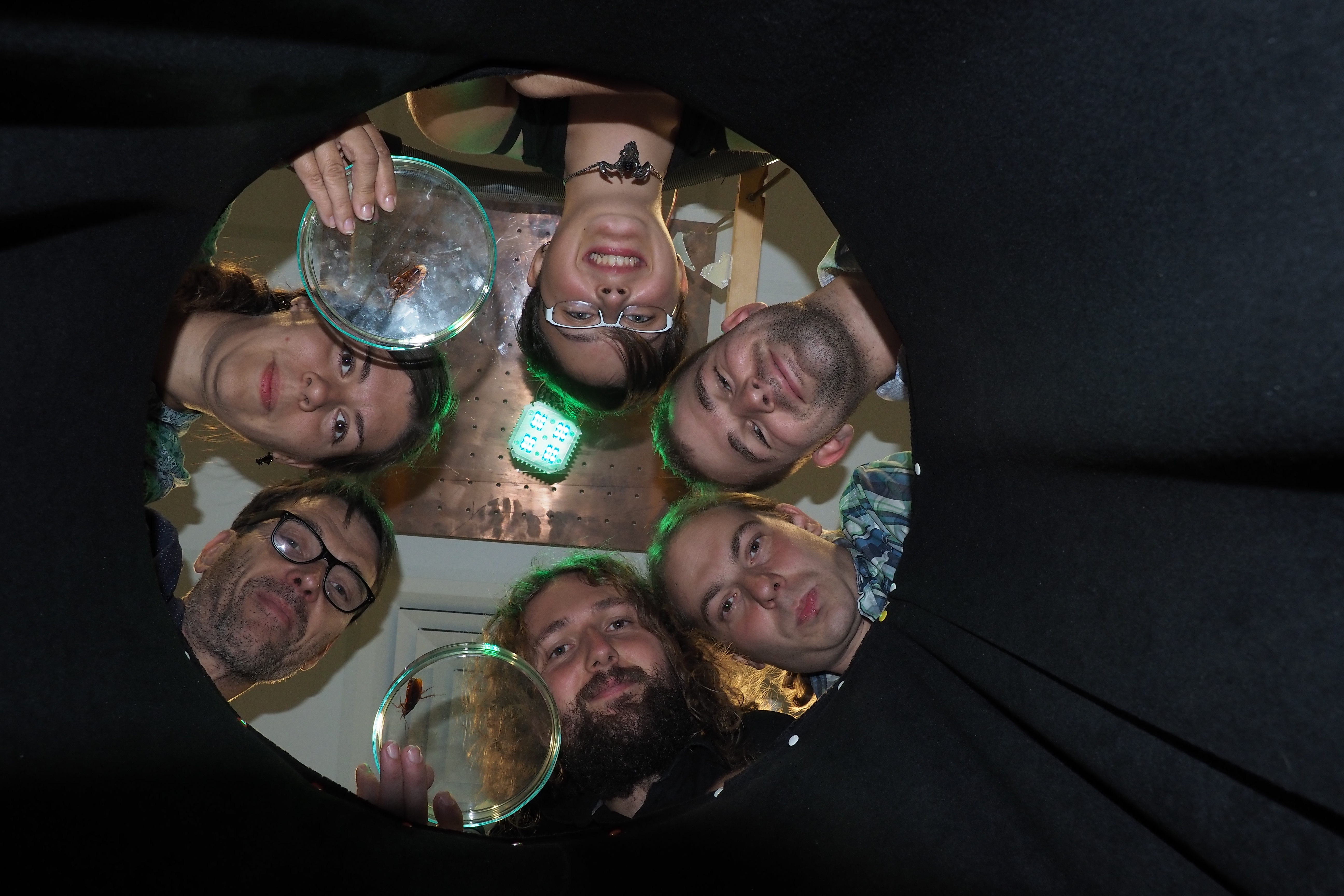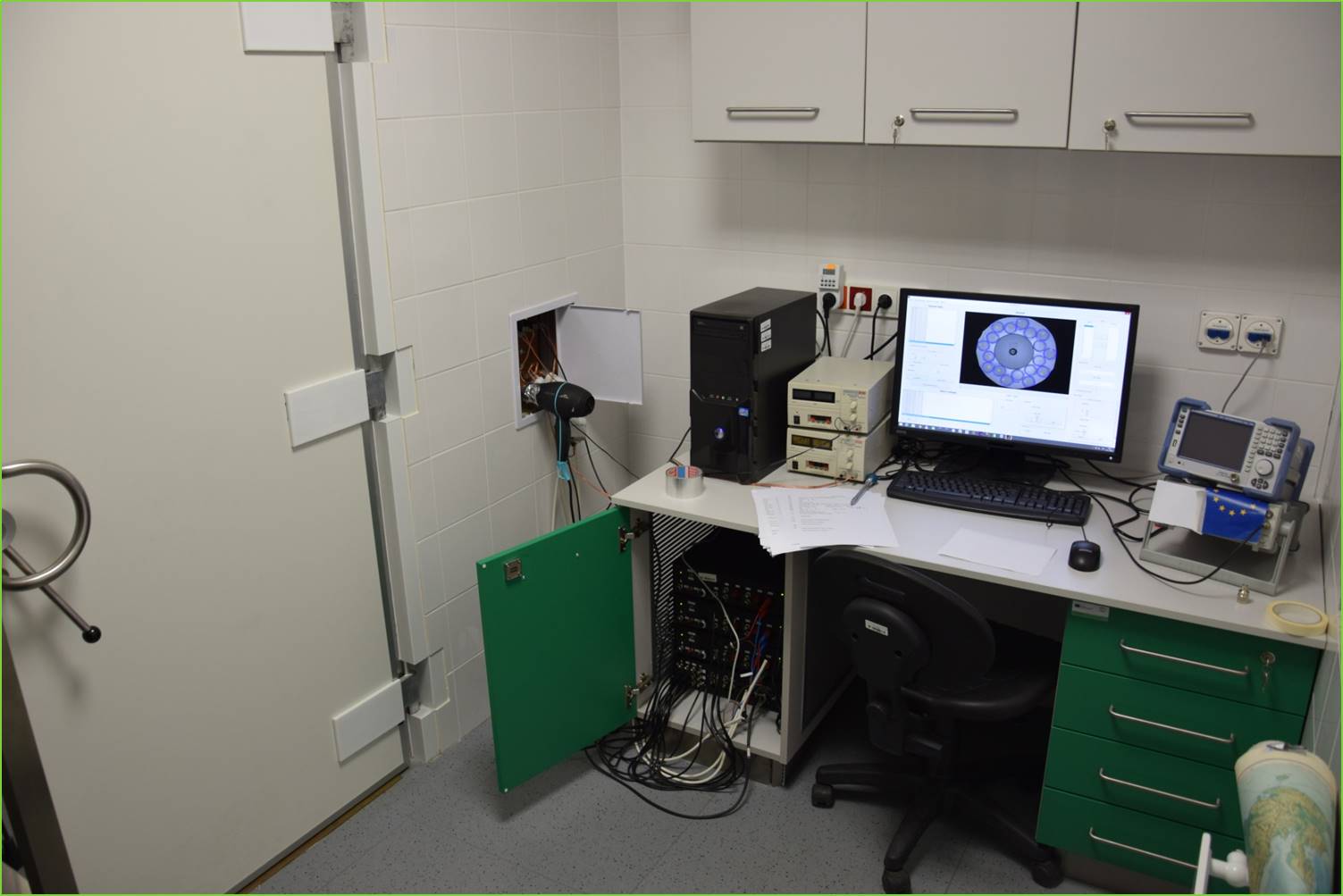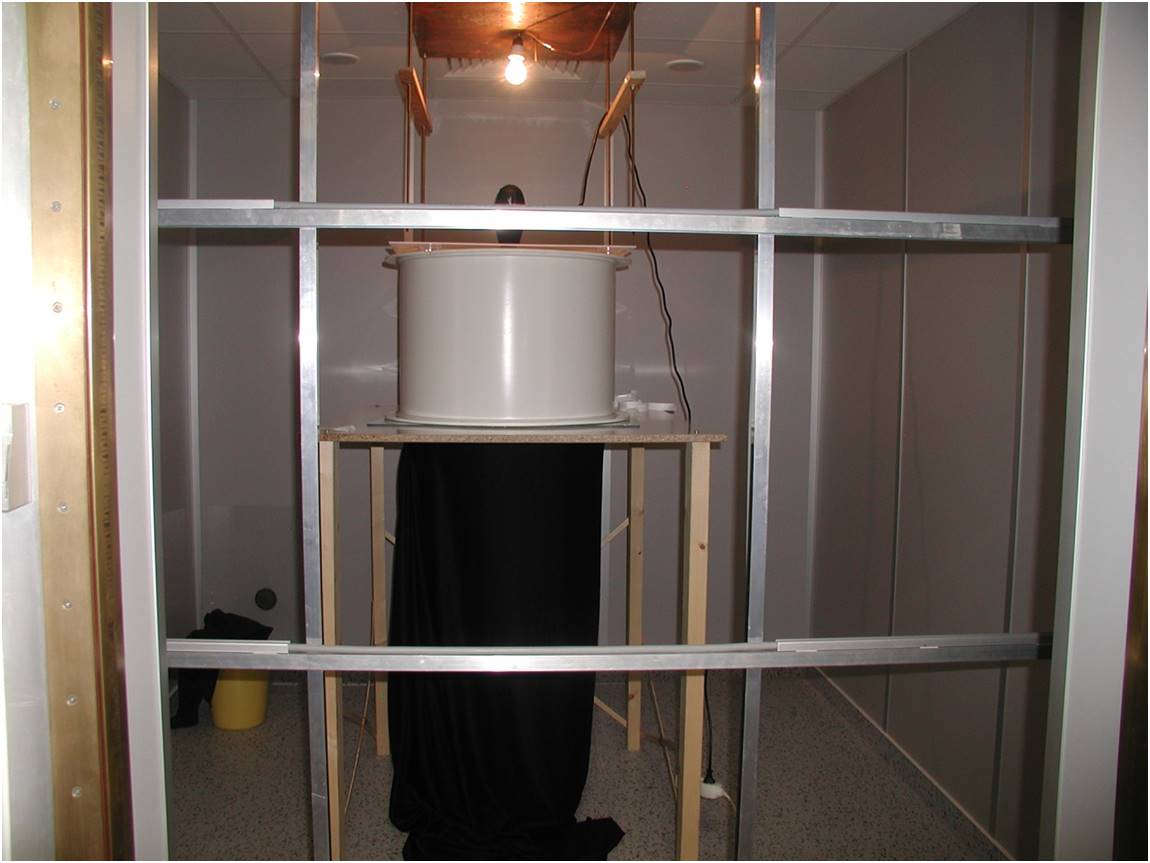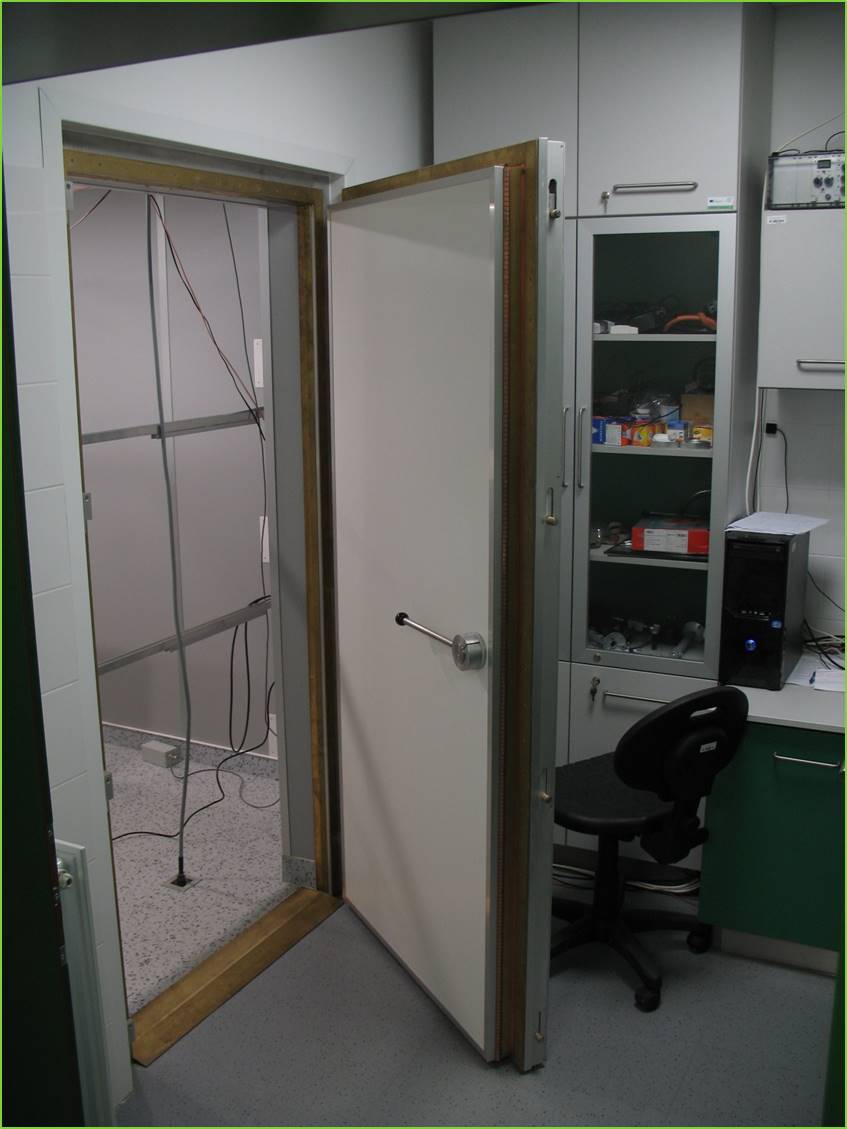Research Team of Martin Vácha
Keywords:
neuroethology, senses, magnetoreception, insects, compass sense, geomagnetic field, magnetic orientation, electromagnetic fields, light, Cryptochrome, circadian rhythms, cell signalling
| Head of laboratory: | Ass. Prof. Martin Vácha, Ph.D. |  |
| Office: | 123 (Kamenice 5 — A36) | |
| E-mail: | vacha@sci.muni.cz | |
| Phone: | 549 49 7877 | |
| Teaching | ||
| Publications | ||
| Projects | ||
Goals and Methods
The question How and why do animals perceive geomagnetic field is one challenging problems of neuroethology. The possibility that the compass sense is of photo-chemical nature and that it may be linked to visual pathway is recently discussed in some animals. Such hypothesis would imply that some animals may see the position of geomagnetic vector. Our work focused on laboratory testing of insect abilities to perceive the magnetic field of the Earth has shown that some aspects of insect magnetoreception are in line with the vision-based compass hypothesis. Our long-term goal is solving still enigmatic function and localisation of magneto-sensory and magnetic information processing structures in insect nervous system. We employ laboratory behavioral assayes based on video tracking of animals in arena or on video-based analysis of spontaneous or learned behavioral reactions to magnetic stimuli.
Lab members
- Mgr. Kateřina Tomanová, Ph.D. – postdoc
- Bc. Kristína Briediková
- Bc. Juraj Markúš
- Bc. Kateřina Kocábková
- Bc. Jakub Fedra
Selected publications
-
-
- Vácha M, Půžová T, Drštková D. (2008) Ablation of antennae does not disrupt magnetoreceptive behavioural reaction of the American cockroach to periodically rotated geomagnetic field. Neuroscience Letters 435:103-7.
- Vácha M, Půžová T, Drštková D. (2008) Effect of light wavelength spectrum on magnetic compass orientation in Tenebrio molitor. J Comp Physiol A 194:853-9.
- Vácha M, Drštková D, Půžová T. (2008) Tenebrio beetles use magnetic inclination compass. Naturwissenschaften 95:761-5.
- Vácha M, Půžová T, Kvíčalová M. Radiofrequency magnetic field disrupts magnetoreception in American cockroach. (2009) Journal of Experimental Biology 212:3473-7.
- Vácha M, Kvíčalová M, Půžová T. (2010) American cockroach prefers four cardinal geomagnetic compass positions at rest. Behaviour 147:425-40.
- Válková T, Vácha M. (2012) How do honeybees use their magnetic compass? Can they see the North? Bulletin of Entomological Research 102: 461-467.
- Slaby, P., Tomanova, K. and Vacha, M. (2013). Cattle on pastures do align along the North-South axis, but the alignment depends on herd density. J Comp Physiol A 199, 695-701.
- Bazalova, O., Kvicalova, M., Damulewicz, M., Valkova, T., Slaby, P., Bartos, P., Netusil, R., Tomanova, K., Provazník, J., Braeunig, P. et al. (2016). Cryptochrome 2 mediates directional magnetoreception in cockroaches. PNAS 113, 1660-1665.
- Tomanova, K. and Vacha, M. (2016). Magnetic orientation of Antarctic amphipod Gondogeneia antarctica is cancelled by very weak radiofrequency fields. Journal of Experimental Biology 219, 717-724.
- Slaby, P., Karas, J., Netusil, R., Tomanova, K. and Vacha, M. How swift is Cry-mediated magnetoreception? Conditioning in an American cockroach shows sub-second response. (2018) Front Behav Neurosci, Frontiers Research Foundation, 12, n. 107, p. 1-10., doi:10.3389/fnbeh.2018.00107.
- Bartos, P., Netusil, R., Slaby, P., Dolezel, D., Ritz, T. and Vacha, M. (2019). Weak radiofrequency fields affect the insect circadian clock. J. R. Soc. Interface 16, p. 1-3. doi:10.1098/rsif.2019.0285.
-
Links to web sites of related laboratories
- https://www.caesar.de/en/our-research/current-groups/neurobiology-of-magnetoreception/research-focus.html
- www.physics.uci.edu/~tritz/
- http://www.biol.vt.edu/faculty/phillips/
- https://www.biology.lu.se/rachel-muheim
- www.gps.caltech.edu/users/jkirschvink/
- www.member.uni-oldenburg.de/henrik.mouritsen/
- http://www2.med.muni.cz/histology/tomas-barta/#research_interests






